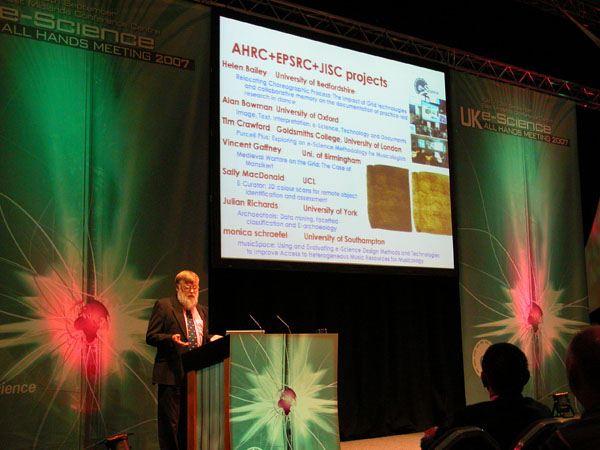The sand starts to fly
28 09 2007Day 2 of the Sandpit – Simon’s view:
The morning was spent in a dance studio with Helen and Sita (choreographers) and Amalia, one of Helen’s team, introducing the technologists (Mike, Andrew, Anya and me) to their world. We reconnected with our bodies as they walked us through movement exercises that helped us to glimpse what it is to be a dancer, and how a visual language can be built up. We each worked on a short ‘performance’ (all 15 seconds of it) composed from movements based on our names, then combined them in pairs, and culminating in an improvisational piece with all of us performing, and trying to respond creatively to what was going on around us. Great fun! But more importantly, hugely complex, helping us appreciate how much is going on at any moment for a dancer.
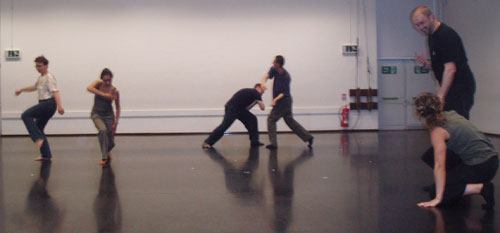
We rounded off the morning by playing with a dance DVD which featured an interactive, annotated timeline for each dance clip. This helped the viewer navigate flexibly to the point of interest — just like we generate in the Memetic replay interface! The positive response that this DVD always gets from dancers is hopefully an encouraging sign of how Memetic will be received…
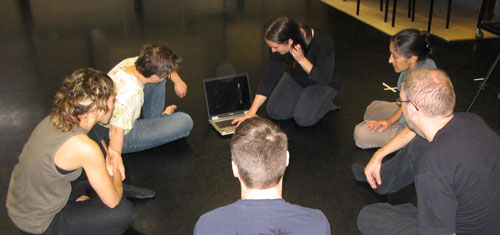
In the afternoon we moved into the new theatre, where we ‘learnt to be choreographers’, and Helen and Sita got their hands dirty using the software. Helen directed Amalia and Lisa, another dancer, through several sequences of a multimedia piece Helen has been choreographing. Our job was to get some insight into the process.
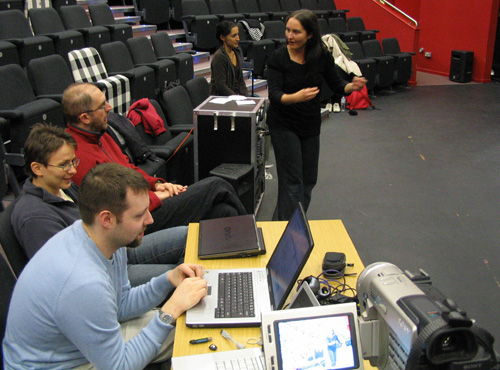
It was great to see some real dancing after our morning’s efforts!…

Then Mike and Anya took over, inventing some new variations, and experiencing what it is like to work with dancers to refine an idea.
Meanwhile, Andrew got Memetic running locally on Helen’s laptop so she now has a portable ‘Access Gird recording studio’ she can start playing with, while I created a dance annotation stencil in Compendium. This enabled the real time annotation of points to which the choreographer wants to return for reflection, eg. when a particular dancer does something, a moment that works/doesn’t work, an intervention from the choreographer, or a compositional strategy.
Sita and Helen then experimented with this to annotate key moments in the rehearsal, which opened up some great discussions about future requirements to support flexible structures.
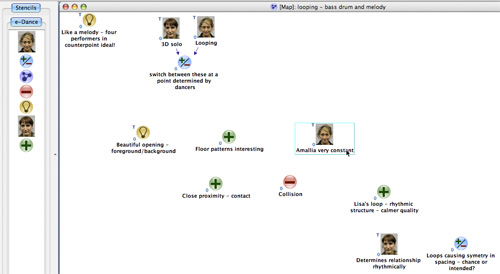
If I’ve learnt anything today, it’s that emergent structure, themes, patterns are central to how choreographers work. Our e-science knowledge cartography and video replay tools must support this.
Categories : Sandpit1, Software, Team
